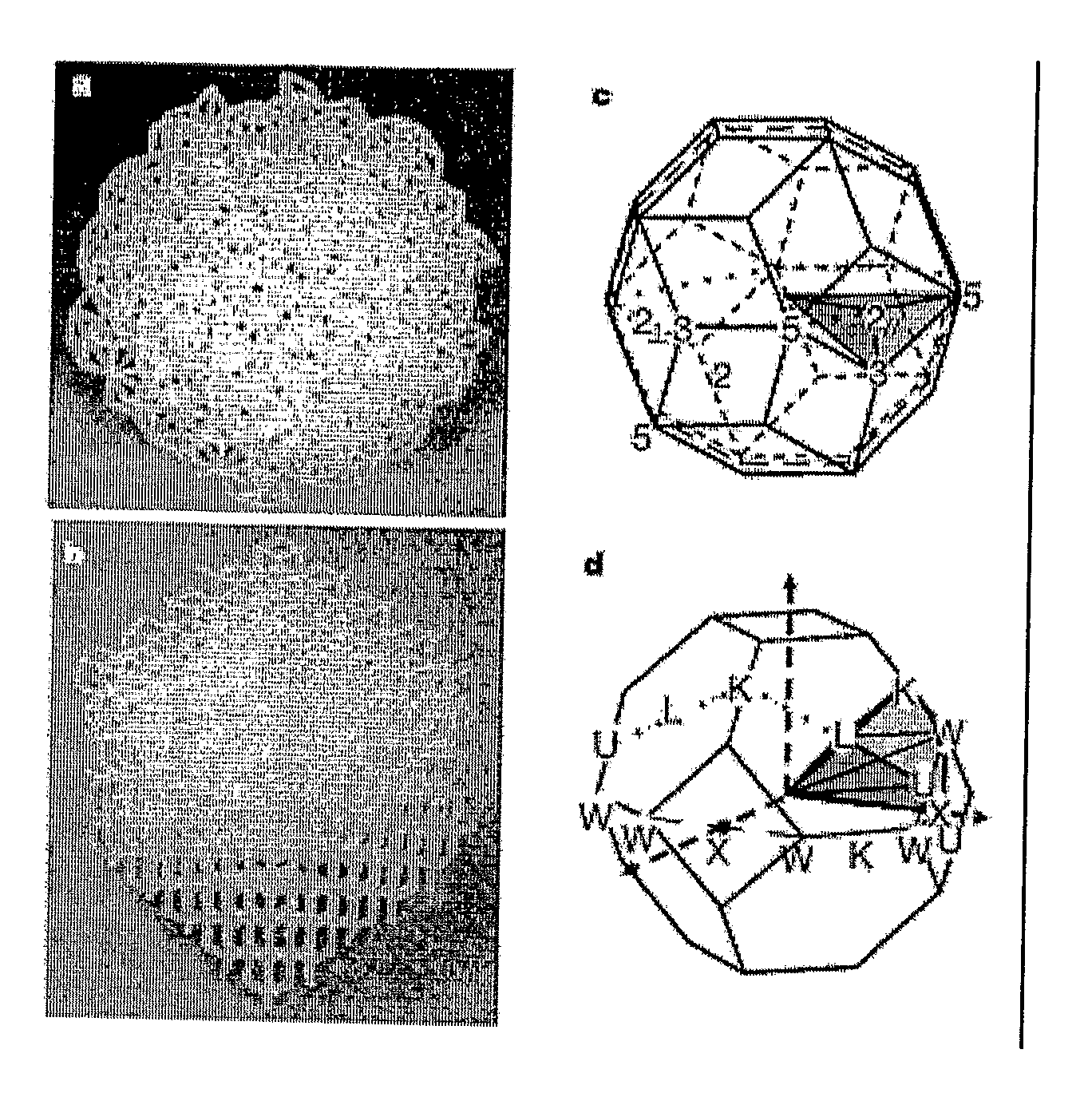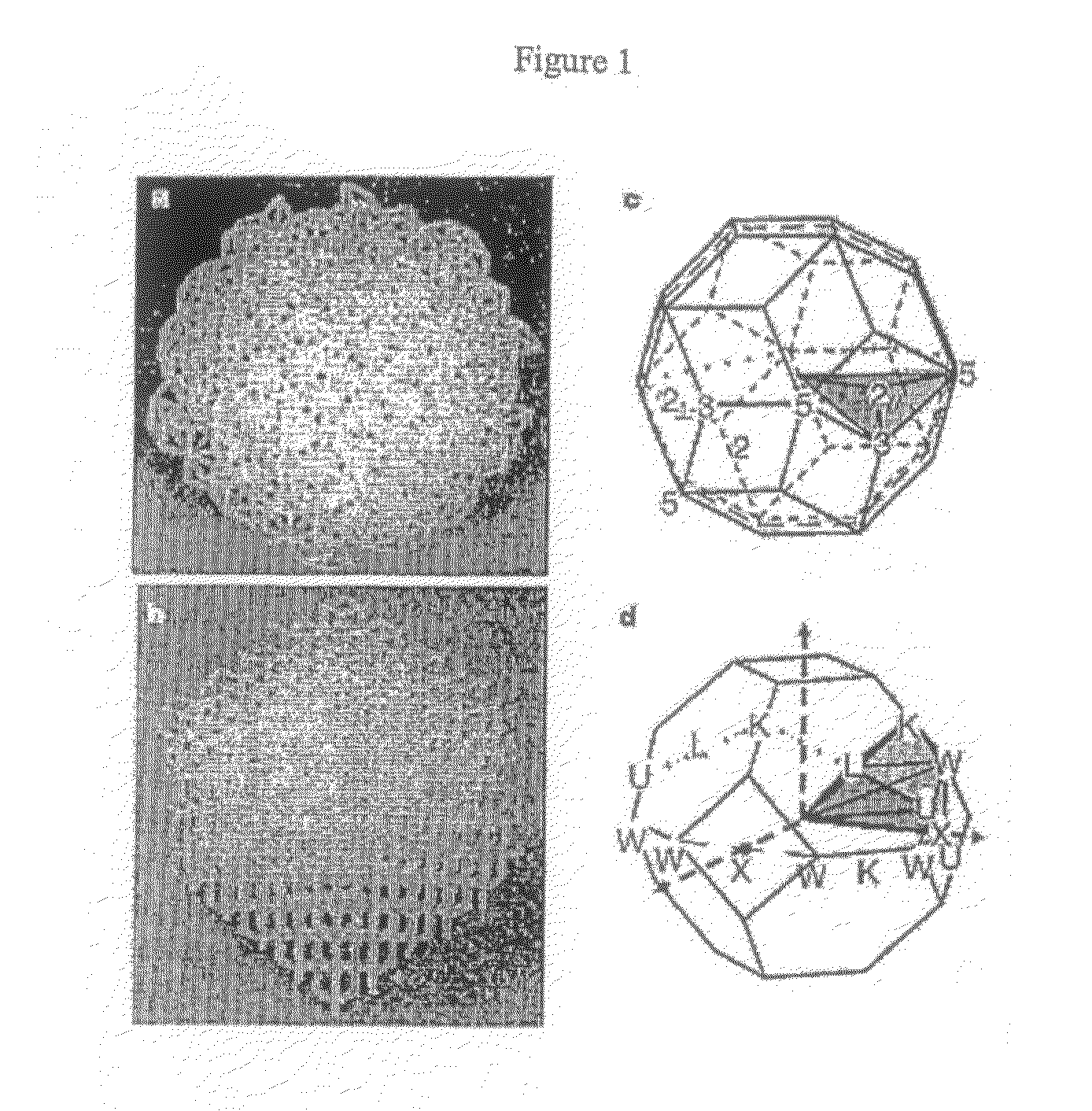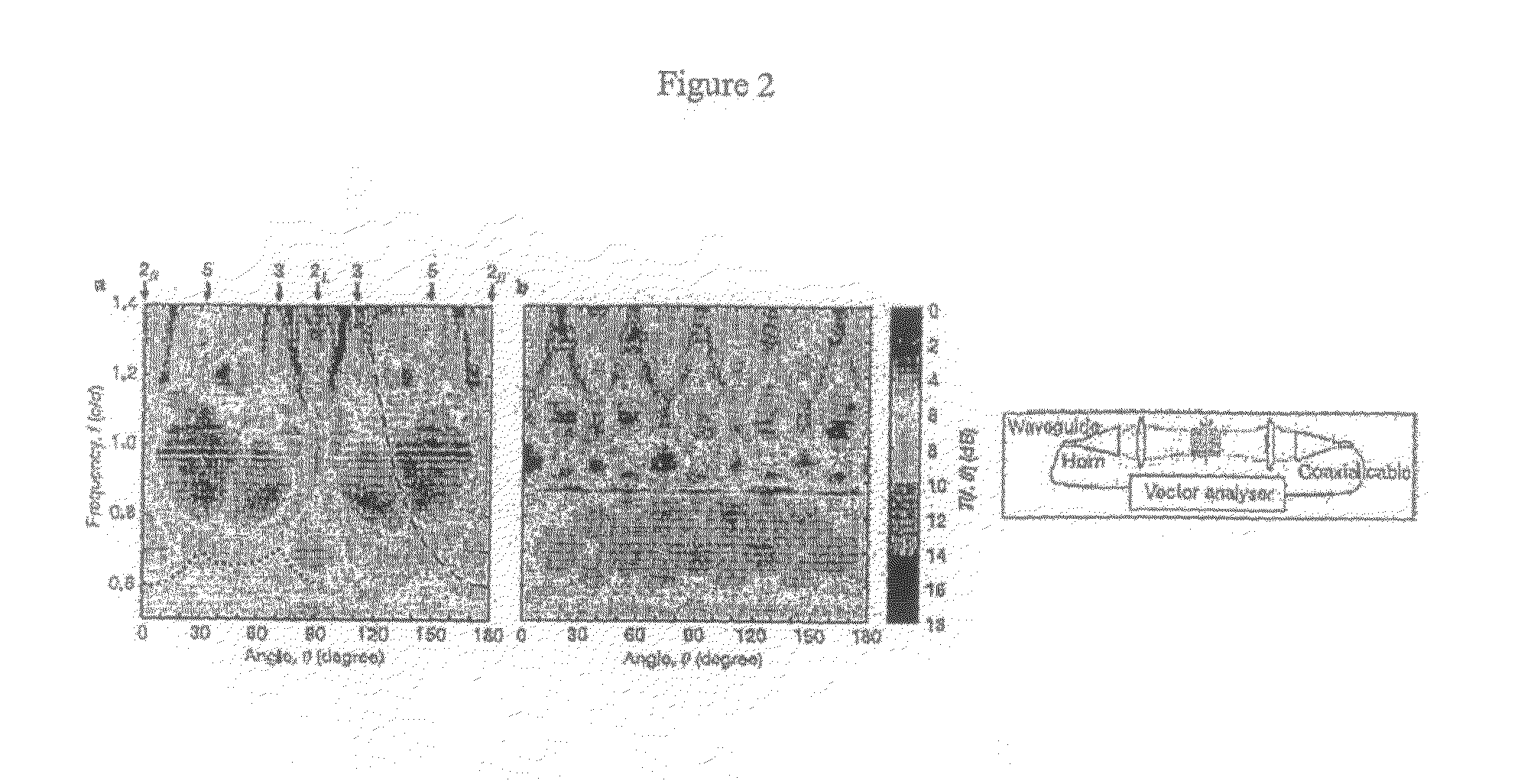Quasicrystalline structures and uses thereof
a technology of crystalline structures and crystalline structures, applied in the field of crystalline structures, can solve problems such as dielectric breakdown, short channel effects, and hot carriers
- Summary
- Abstract
- Description
- Claims
- Application Information
AI Technical Summary
Benefits of technology
Problems solved by technology
Method used
Image
Examples
example 1
Stereolithography Created Lattices
[0120]A D-dimensional periodic lattice has D integer independent basis vectors, while D+N integer linearly independent vectors (with integer N≧1) are required to describe the quasicrystal lattice. The icosahedral quasicrystal lattice of points can be constructed by projecting the points of a six-dimensional hypercubic lattice, the six-dimensional analog of a three-dimensional cubic lattice. The coordinate of any lattice point can be described by the relation:
[0121]R=∑i=16niai,
where the ni are a subset of the integers and ai are the 6 basis vectors: a1=(1,τ,0), a2=(−1,τ,0), a3=(0,1,τ), a4=(0,−1,τ), a5=(τ,0,1), a6=(τ,0,−1), and τ=(√5−1) / 2 the golden mean. The structure has twelve 5-fold, fifteen 3-fold and thirty 2-fold symmetry axes. The lattice points of the icosahedral structure are generated and a solid structure created by using equal length rods to connect points in pairs. The overall shape shown in FIG. 1a is a dodecahedron, so that each of t...
example 2
Transmission Measurements
[0123]Transmission measurements for the icosahedral quasicrystal of FIG. 1a can be made with a HP Model 8510C Vector Analyzer in three bands, from 8 to 15, from 15 to 26 and from 26 to 42 GHz. To approximate plane waves, a single TE10 mode is coupled through two sets of horn-attached waveguides with two custom-made polystyrene microwave lenses as schematically shown in the insert in FIG. 2. Before the sample is put in, the transmission spectrum of the setup is recorded for normalization. Since the sample has different symmetry and dimensions in different directions, the transmission spectrum should be orientation and polarization sensitive. The sample is aligned so that the incident beam is perpendicular to one of the sample's rotational symmetry axes. The sample is rotated along that rotational symmetry axis, and the relative transmission spectrum is recorded, for example, every 2 degrees. For the quasicrystal, a rotation about the 2-fold axis covers all th...
example 3
Holographic Optical Trapping
[0124]The foregoing photonic quasicrystal is macroscopic, however, this design can be miniaturized, e.g., for nanoparticles or other particles. For example, laser tweezers can be used for particle trapping or two-photon polymerization can be used. Such methods allow construction of a quasicrystalline matrix of dielectric components with a photonic bandgap in the visible.
[0125]Computer generated holograms are projected through a high-numerical-aperture microscope objective lens to create large three-dimensional arrays of optical traps. Light at 532 nm form a frequency-doubled diode-pumped solid state laser (Coheret Verdi) is imprinted with phase-only holograms using a liquid crystal spatial light modulator (SLM) (Hamamatsu X8267 PPM). The modified laser beam is relayed to the input pupil of a 100×NA 1.4 SPlan Apo oil immersion objective mounted in an inverted optical microscope (Nikon TE-2000U), which focuses it into traps. The same objective lens is used ...
PUM
| Property | Measurement | Unit |
|---|---|---|
| length | aaaaa | aaaaa |
| wavelengths | aaaaa | aaaaa |
| diameter | aaaaa | aaaaa |
Abstract
Description
Claims
Application Information
 Login to View More
Login to View More - R&D
- Intellectual Property
- Life Sciences
- Materials
- Tech Scout
- Unparalleled Data Quality
- Higher Quality Content
- 60% Fewer Hallucinations
Browse by: Latest US Patents, China's latest patents, Technical Efficacy Thesaurus, Application Domain, Technology Topic, Popular Technical Reports.
© 2025 PatSnap. All rights reserved.Legal|Privacy policy|Modern Slavery Act Transparency Statement|Sitemap|About US| Contact US: help@patsnap.com



